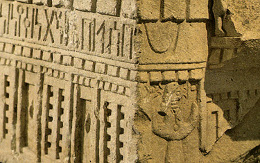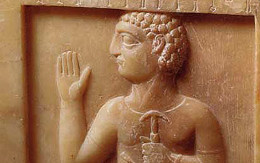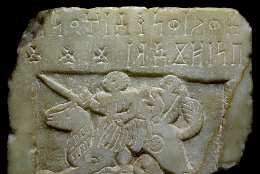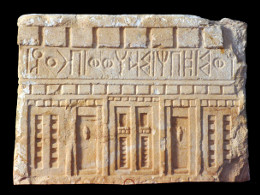CSAI: Corpus of South Arabian Inscriptions
The ASA (Ancient South Arabian) corpus is one of the most interesting collections of epigraphic documents of the Semitic world, first and foremost for its vastness. With its over 15,000 inscriptions, it is the first-hand, written documentation of the culture that flourished in South Arabia from the late second millennium BC to the sixth century AD. At present, CSAI contains a collection of some 8,150 texts digitized by the team of the University of Pisa under the direction of A. Avanzini.
CORPORA BY LANGUAGE\

Corpus of Ḥaḍramitic Inscriptions
The collection includes about 900 inscriptions which date from between the 7th century BC and the end of the 3rd century AD. After an early period of formation characterised by a strong Sabaean cultural and linguistic influence, around the 5th-4th century Ḥaḍramawt became a kingdom with its own political importance. Its main activity was trading in incense, which grew in various regions of the country.
Corpus of Minaic Inscriptions
The corpus of the Minaic inscriptions is composed by almost 1,400 texts, gathering all the epigraphic texts left in Minaic (elsewhere called Madhabaic) language. These come from the Jawf valley in northern Yemen (Corpus of Central Minaic inscriptions), but also from outside South Arabia, as the Minaean traders visited and settled in other regions and sites of the Arabian Peninsula and the Near East (Corpus of Marginal Minaic inscriptions).
Corpus of Qatabanic Inscriptions
The Corpus of Qatabanic inscriptions comprises in total more than 1,800 texts. It has been divided into three linguistic varieties: beside the inscriptions of the Central Qatabanic, the two small corpora of Marginal Qatabanic and Awsanite inscriptions has been created, because these documentations show several linguistic and cultural features that distinguish them from the Qatabanic language of the mainland.
Corpus of Sabaic Inscriptions (work in progress)
The Corpus of Sabaic inscriptions is the largest linguistic corpus of South Arabian texts. To date, of the approximately 5,000 Sabaic inscriptions, more than two thirds have been published in DASI. This corpus is divided into three major historical linguistic periods: early, middle and late. We have also identified a number of regional varieties such as the Corpus of Early Sabaic inscriptions from Ethiopia (that is being compiled) and - in the Middle phase - the Central, Northern and Southern Sabaic.
Corpus of Undefined Ancient South Arabian Language inscriptions (work in progress)
This corpus collects all the South Arabian texts which cannot be assigned to any specific language, because they convey no information about their linguistic provenance, nor on their geographic or chronological setting. The majority of them are fragmentary or simply onomastic texts.CORPORA BY SCRIPT TYPOLOGY

Corpus of Ancient South Arabian Minuscule texts (work in progress)
This is a small corpus, comprising some 40 texts, written in a new script and on a different support than the inscriptions in monumental writing engraved on stone, bronze or rocks. The first two wooden sticks texts were discovered at the beginning of the 1970's, during clandestine excavations in as-Sawdāʾ. The scholar Mahmoud al-Ghul was the first to partially decipher these new documents.COLLECTIONS BY DEPOSIT

Collection of the objects from the European museums
Since the beginning of the nineteenth century, the political presence and scientific expeditions of Europeans in the Arabian Peninsula inaugurated the establishment of European private and public collections of ancient South Arabian material, which constantly increased during the following decades.
Collection of the objects from the USA museums
The Collection of the objects from the USA museums in DASI gathers the South Arabian antiquities housed in USA museums and private collections.
Collection of the objects from the Yemeni museums
The digital cataloguing of the South Arabian inscriptions and artefacts housed in the Yemeni museums is one of the activities of the project CASIS, funded by the Italian Ministry for the University and Research for the years 2007-2010.

No comments:
Post a Comment